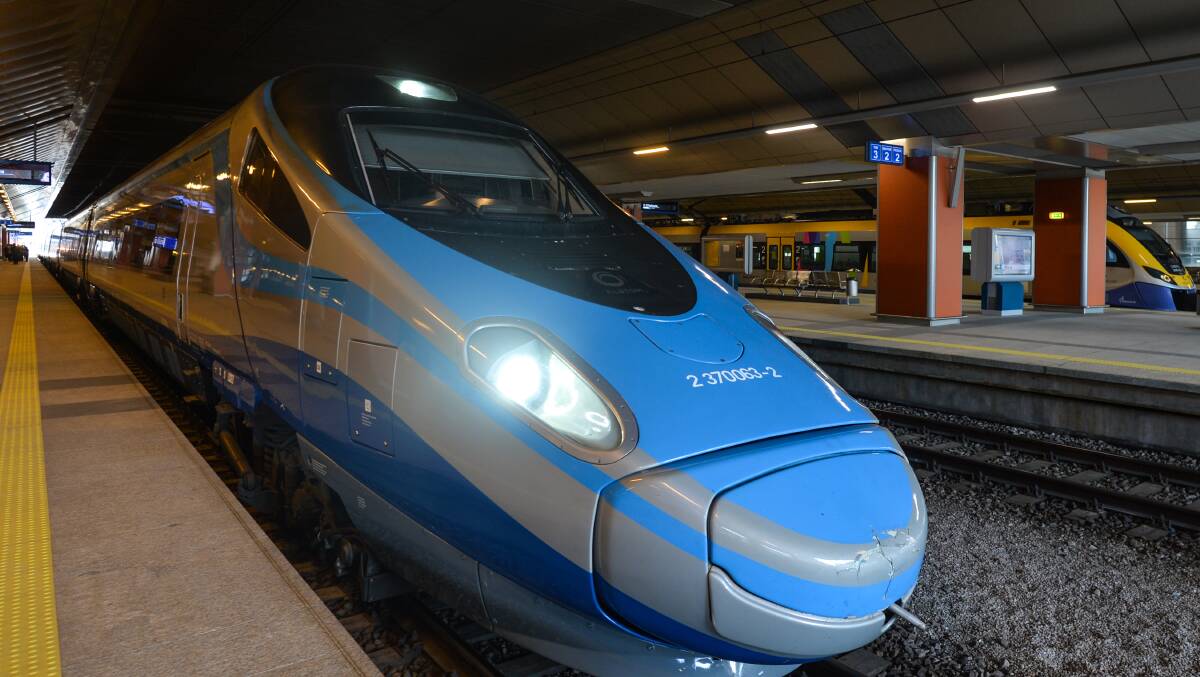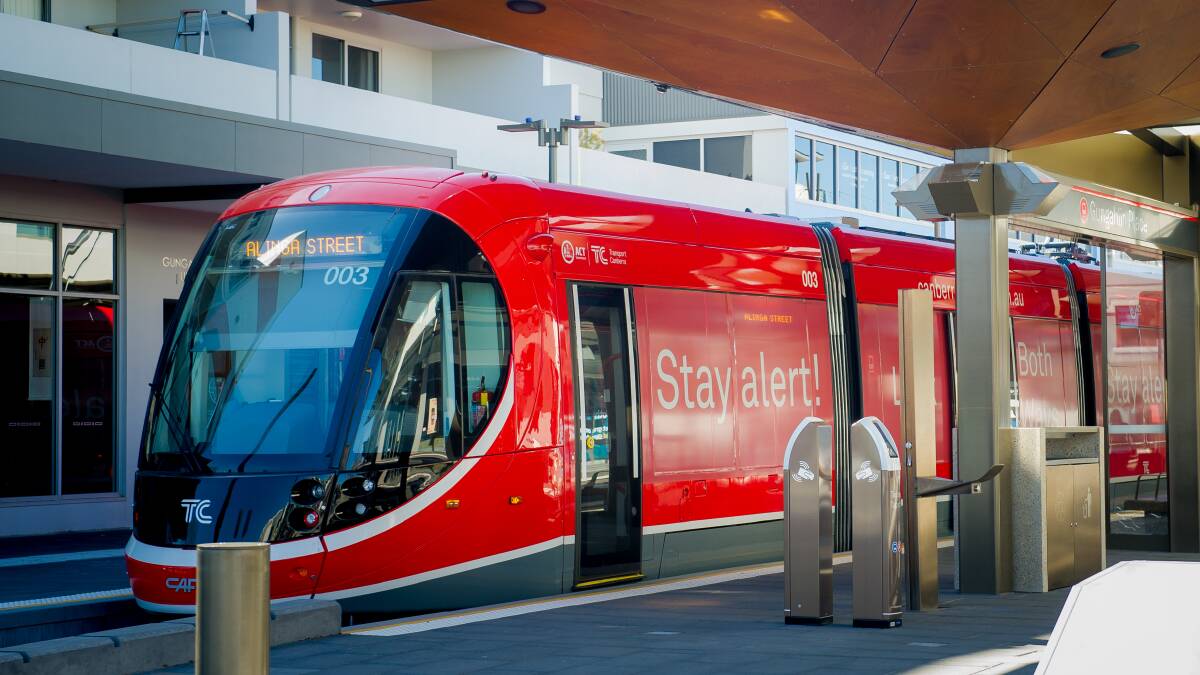Your report (Page 5, May 26) of the Grattan Institute stating the high speed train would be too costly gives no justification for that assertion other than a cynical and misleading suggestion that it will cost $10,000 per taxpayer for the primary benefit of business travellers. There is no present value total cost estimate but a suggestion it will take 50 years.
Subscribe now for unlimited access.
or signup to continue reading

If by taxpayer they mean those working it would constitute 16 million people, and hence cost in today's dollars 160 billion, a figure twice what has been suggested in other discussions on this project.
There will be no sudden $10,000 impost. Rather, at best $200 per annum per taxpayer and reducing significantly each year as the population increases. Such projects cannot be assessed purely on cost, the train will benefit millions yearly. Its reduction of congestion (encouraging decentralisation) measurably saves billions of dollars annually. The submarine project, of similar magnitude, will be used by a handful of submariners.
We have lost the car industry, oil refining, large sectors of manufacturing and so on. The car subsidy was $80 per person per year. Germany's figure was $450, the US, UK and major European counties all $250 and upwards per capita. The arguments for the project are compelling. The opposition on cost grounds simply does not add up.
John Buxton, Red Hill
Fast train worth another look
I basically support C Williams' call for a national high-speed rail network (Letters, June 1), despite a report from the Grattan Institute which concludes that such a network would not be cost effective. A national fast-rail network would not pass a cost-benefit test mainly because of the long distances and low average population density involved if Adelaide - let alone Perth - were part of the network. A south-eastern network, taking in Melbourne, Canberra, Sydney and Brisbane is far more likely to be financially viable.
As C Williams implied, the Grattan Institute's claim that a fast-rail network would take "nearly 50 years" to build is also questionable. China built its 35,000 km of fast-rail network (the Héxié Hào) between mid-2008 and the end of 2019 an extreme example admittedly, but a factor of five does make Australia appear less than industrious.
A Canberra-Sydney fast-rail link could replace much of the present short-haul air travel and, given that take-off occupies a relatively large proportion of travel time, substantially decrease emissions per passenger/kilometre. Emissions could be reduced to near-zero if the fast-rail network were electrified, starting with the Canberra-Sydney link.
A fast-rail network would be very expensive to build, but it would bolster the populations and economies of towns such as Goulburn, Bowral and Albury-Wodonga along the rail corridors and take some of the commuter pressure off Sydney and Melbourne.
Douglas Mackenzie, Deakin
Tram claims not just hot air

Leon Arundell says (Letters, May 29) it'll take twenty three years for tram trip reductions in carbon emissions to pay back the carbon emissions in building Stage One.
That's if you ignore the carbon emissions in making cars and building roads, costs that are higher than the tram building costs for similar trip numbers.
If you compare life cycle costs of trams to life cycle costs of cars, the payback for substituting trams for cars is very much quicker. By many years quicker.
Anti tram proponents like to disregard the carbon costs of road building and expansion, and the carbon costs of motor vehicle construction. Interestingly, some people similarly disregard the carbon costs of infernal combustion vehicle construction when claiming high carbon costs of electric and hybrid vehicles.
Estimates are hard enough if you make fair comparisons. They decline into puffery if you don't.
Christopher Hood, Queanbeyan
Residents cut out of Kippax plan
Minister Gentleman is persisting with rezoning a large part of the Kippax Playing Fields from urban open space to core commercial after receiving 38 submissions opposing it and only four in favour. Much of the community opposition relates to flooding risks; the green area to be rezoned abuts grassed floodways. The 2015 Kippax flood study by Calibre showed that the existing carparks west of Kippax Fair provided development opportunities without flood mitigation works, while flood mitigation works are required to the east regardless of any expansion of Kippax Fair onto the Playing Fields.
The Minister's recommended Draft Variation to the Territory Plan (DV 361, April 2020) stipulates that a "flood investigation report" must satisfy the Transport Canberra and City Services Directorate (TCCSD) that development in the rezoned green area does not increase flood risk in the remaining urban open space. This lacks credibility for two reasons. First, there is no mention of Moyes Crescent and no stipulation that the expanded core commercial zone must be set back 50 metres from Moyes Crescent as suggested in the original DV361 documents. Second, the Government still plans to build a new road (not a bridge) over the floodway to provide basement access in an eastern expansion of Kippax Fair.
The people of West Belconnen, not the owners of Kippax Fair, should have the opportunity to decide which development option is best for future generations and ACT taxpayers. Concerned citizens can contact the Standing Committee for Planning and Urban Renewal and request a Public Inquiry.
Glenys and Phil Byrne, Florey
Watch out for your freedoms
Will Australia will become more authoritarian on account of the COVID-19 health measures? Civil Liberties Australia is concerned that governments are always less enthusiastic about reinstating rights than they are about taking them away.
Australians have been promised that the rights around freedom of movement suspended to limit the spread of COVID-19 will be reinstated once the crisis is over. This is the same promise made when the Australian government responded to the terrorist threat after 09/11.
The 9/11 crisis is over and many of the rights "temporarily suspended" then remain compromised to this day.
- Dr Kristine Klugman
This suspension allowed for longer investigation periods, questioning and detention warrants for non-suspects including family members, journalists, children and innocent bystanders. It also allowed the introduction of warrantless searches, control orders, more intrusive surveillance measures and evidence procedures that exclude the defendant and their legal representatives amongst others. The 9/11 crisis is over and many of the rights "temporarily suspended" then remain compromised to this day.
Rights reinstatement after a crisis in other countries similar to Australia is grounded in legal protections for civil and political rights. Australians do not have the protection of a national Civil and Political Rights Act, and reinstatement is almost completely down to the good judgement and self-restraint of political leaders. Are we confident of that?
Dr Kristine Klugman, president, Civil Liberties Australia, Fisher
Nuclear never the answer
Reverend Dr Vincent Zankin's dismissal of the important role of the Treaty on the Prohibition of Nuclear Weapons in ridding us of one of the world's two great existential threats (Letters, 30 May) completely misses the point of the Treaty.
It is a tool to convert the weapons from symbols of power to symbols of criminal status where they belong, just as the problems posed by chemical weapons, biological weapons, landmines and cluster munitions have all been dramatically reduced by their respective prohibition treaties. No treaty can bring eternal peace between nations, but there's nothing impossible about getting rid of humanity's worst creations.
The nuclear powers themselves know that, when it enters into force, the Treaty will be effective. In a communication to its NATO allies in October 2016, the US warned that the impending nuclear ban treaty negotiations "could impact non-parties as well as parties" and "could make it impossible to undertake nuclear planning or training". While not attending the negotiations, they certainly tried to undermine them, as did Australia.
Why would they bother if the whole thing would be a toothless tiger? As for the world being at the mercy of nuclear-armed nations, the nuclear age is full of examples of people and nations resisting or challenging those with the weapons. Obscene destructive capacity doesn't translate to military advantage but only to a risk of things going catastrophically wrong for all of us.
Sue Wareham, President, Medical Association for Prevention of War, Cook
Keep on sharing
Michael Lucas, suggests (Letters, May 30) that the solution to incidents on shared paths between cyclists and pedestrians is to have separate paths for each. Not only would this be an unthinkable infrastructure luxury, but it would remove the responsibility of all of us who share the paths.
On my early morning walks, I encounter fellow walkers, runners and of course, cyclists. I can honestly say, without exception, that all those I have encountered have been respectful, courteous, friendly and rule/regulation compliant. So shared paths are exactly that. And when we share them, it behoves us all to display that respect, courtesy and compliance with the rules.
Angela Kueter-Luks, Bruce
ROBODEBT SHAME
Congratulations to Asher Wolf for her well researched piece about robodebts - "An Analytical Weapon of Planned Cruelty" (Page 17, June 1). Of course it is ridiculous to claim that the government was negligent. They did it on purpose. It is like the difference between an accident and an assault.
James Gralton, Garran
SO LONG, COAG
Professor Twomey's foreshadowing the disappearance of "democracy" - if it ever existed - whereby government processes purportedly had some degree of transparency, terminated with 2019's "miracle' election win (Page 2, My 30). Even the most egregious abuses of government power now are sub rosa.
Albert M. White, Queanbeyan
TIME FOR REPUBLIC
If the letters show the Queen was implicated in the dismissal of Australia's democratically elected Government we should go to a republic asap.
Rod Holesgrove, Crace
STRANGE PRIORITIES

"Long queues for new tattoos" the headline read (Page 8, May 31). It says something about the priorities of some 30 "mostly 20-year-olds" when the first thing they wanted to do when the COVID-19 restrictions were further eased on Saturday was to get inked.
Don Sephton, Greenway
FOOTY FARCE
I use to believe watching rugby league while listening to Rampaging Roy Slaven and HG Nelson couldn't get any funnier. But when I learnt NRL games now have crowd noise dubbed into broadcasts to compensate for empty grandstands my funny bones haven't stopped laughing.
John Sandilands, Garran
THINK OF THE CHILDREN
I don't want to see our children and grand-children live in a poorer Australia, as our borrowings sky-rocket due to COVID-19 stimulus measures. So, as a self-funded retiree who pays no tax on superannuation earnings, I am happy to see a flat rate of 15 per cent tax applied to all superannuation earnings, including capital gains. I ask all of us paying no tax - it's not much to give up 15 per cent in return for helping underwrite the future prosperity of Australia.
Ian Morison, Forrest
GET REAL ON REFORM
Australia's Fair Work Commission is only ten years old and has required compromise on all sides, but Prime Minister Morrison starts his new IR reform with unilateral attacks on workers. How can this bring real IR reform?
Trevor Wilson, Chifley
KEEP THE PRESSURE ON
Keep the thumb on those petrol companies, Chief Minister. The welcome sub-$1 per litre price of two weeks ago has, at a local servo, crept successively up to 109.9. Since prices for 91, 95 and 98 are often not displayed at suburban servos, one assumes a similar but harder to monitor creep.
Lew Rushbrook, Weston
NOT A GOOD LOOK
By rolling over rather than going to court over the Robodebt affair the LNP must realise their $721m shameful dealings dished out to 470,000 of the most vulnerable citizens of our nation has branded their image worse than Ebenezer Scrooge.
John Sandilands, Garran
Email: letters.editor@canberratimes.com.au. Send from the message field, not as an attachment. Fax: 6280 2282. Mail: Letters to the Editor, The Canberra Times, PO Box 7155, Canberra Mail Centre, ACT 2610.
Keep your letter to 250 or fewer words. References to The Canberra Times reports should include date and page number. Letters may be edited. Provide phone number and full home address (suburb only published).
To send a letter via the online form, click or touch here.

